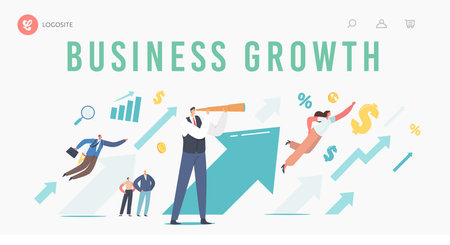Understanding Index Funds and ETFs
When planning for retirement in the United States, understanding the key vehicles available for investing is essential. Two of the most popular options within 401(k) and IRA accounts are index funds and exchange-traded funds (ETFs). Both are designed to provide broad market exposure, low costs, and a hands-off approach, making them attractive for long-term growth.
What Are Index Funds?
An index fund is a type of mutual fund that aims to replicate the performance of a specific market index, such as the S&P 500. Instead of trying to outperform the market by actively selecting stocks or bonds, index funds simply mirror the holdings and weightings of their chosen benchmark. This passive approach typically results in lower management fees and reduced trading costs, which can help your investments grow more efficiently over time.
What Are ETFs?
ETFs, or exchange-traded funds, also track a particular index or sector but trade on major stock exchanges like individual stocks. This means you can buy or sell shares of an ETF throughout the trading day at market prices. ETFs combine some of the diversification benefits of mutual funds with the flexibility and liquidity of stocks, making them a versatile choice for many investors.
Similarities Between Index Funds and ETFs
Both index funds and ETFs are generally built to track an underlying index, offering broad diversification at a relatively low cost. They minimize human judgment in investment decisions by following predetermined rules tied to their benchmarks. Additionally, both are eligible investment choices within retirement accounts like 401(k)s and IRAs.
Key Differences
The main differences come down to how they are purchased and managed. Index funds are bought or redeemed at the end-of-day net asset value (NAV), while ETFs can be traded throughout the day at fluctuating market prices. ETFs may offer lower expense ratios on average, but could incur brokerage commissions depending on your provider, while index funds often have minimum investment requirements but no trading fees.
Why Theyre Popular in Retirement Accounts
Index funds and ETFs have surged in popularity among U.S. retirement savers because they offer instant diversification across hundreds or even thousands of securities, helping reduce risk without sacrificing potential returns. Their low expenses mean more of your money stays invested for growth. Plus, their transparency makes it easy to monitor your portfolio’s composition and performance—key advantages when building wealth inside tax-advantaged accounts like 401(k)s and IRAs.
Benefits of Investing in Index Funds and ETFs within Retirement Accounts
When planning for retirement in the U.S., maximizing your 401(k) or IRA growth is essential. Index funds and ETFs offer several significant advantages when included in these tax-advantaged accounts. Below, we break down the key benefits for American savers:
Tax Advantages
Both 401(k)s and IRAs are designed to help you save more efficiently by offering unique tax benefits. Here’s how investing in index funds and ETFs inside these accounts works to your advantage:
| Account Type | Tax Benefit | Example |
|---|---|---|
| Traditional 401(k)/IRA | Contributions are made pre-tax; investments grow tax-deferred until withdrawal. | You pay no taxes on gains or dividends each year; taxes apply only when you withdraw funds in retirement. |
| Roth 401(k)/IRA | Contributions are made after-tax; qualified withdrawals (including earnings) are tax-free. | No taxes owed on investment growth or withdrawals in retirement, provided requirements are met. |
Compound Growth Potential
The power of compounding can supercharge your retirement savings, especially over long time horizons. By reinvesting dividends and capital gains within your 401(k) or IRA, you benefit from growth-on-growth — a snowball effect that can significantly boost your nest egg over decades. Since taxes on gains are deferred (or eliminated with Roth accounts), more money stays invested and compounds faster compared to taxable brokerage accounts.
Cost Efficiency: Low Fees Mean Higher Returns
Index funds and ETFs are well-known for their low expense ratios, especially compared to actively managed mutual funds. Lower fees mean less of your return gets eaten up by costs. This is particularly important for long-term investors, as even small differences in fees can add up to thousands of dollars over time.
Comparing Typical Fund Expenses Over 30 Years*
| Fund Type | Average Annual Fee (%) | Total Cost on $100k Investment |
|---|---|---|
| Index Fund/ETF | 0.05% – 0.15% | $1,500 – $4,500 |
| Active Mutual Fund | 0.75% – 1.5% | $22,500 – $45,000 |
*Assumes constant investment, no withdrawals, and no additional contributions for illustration.
Key Takeaway for U.S. Retirement Savers:
By utilizing index funds and ETFs within your 401(k) or IRA, you combine robust tax advantages, maximize compound growth potential, and minimize costs—giving you a significant edge in building long-term wealth for retirement.

3. Choosing the Right Index Funds and ETFs for Your 401(k) or IRA
When building your retirement portfolio inside a 401(k) or IRA, selecting the right index funds and ETFs is crucial for maximizing long-term growth. The options available can be overwhelming, but using practical criteria helps narrow down the choices and ensures your investments align with your financial objectives.
Evaluate Expense Ratios
One of the most important factors to consider is the expense ratio, which represents the annual fee charged by the fund as a percentage of your investment. Lower expense ratios mean more of your money stays invested and compounding over time. Most reputable index funds and ETFs offer low fees—often less than 0.10% for broad-market options—making them cost-effective compared to actively managed funds.
Understand the Underlying Index
Always check which index a fund or ETF tracks. Common examples include the S&P 500, Russell 2000, or MSCI EAFE. Each index offers different exposure; for instance, an S&P 500 fund focuses on large-cap U.S. companies, while an international index fund captures global markets outside the United States. Make sure your selections diversify across sectors and geographies in line with your retirement strategy.
Assess Risk Tolerance
Your risk tolerance should guide your asset allocation. Younger investors with decades until retirement may favor stock-heavy index funds for higher growth potential, accepting greater short-term volatility. Those closer to retirement often shift toward bond or balanced index funds to reduce risk and preserve capital. Many 401(k) plans also offer target-date funds that automatically adjust allocations based on your expected retirement year.
Align With Retirement Goals
Selecting funds that match your personal goals is essential. Consider factors like desired retirement age, income needs, and other sources of savings or pensions. If you want steady growth with moderate risk, a blend of U.S., international, and bond index funds may be ideal. For those seeking maximum accumulation and comfortable with market swings, heavier equity exposure could be appropriate.
Practical Tip: Review Fund Offerings Regularly
Your 401(k) or IRA provider may periodically update its list of available funds and ETFs. Take time each year to review these options and rebalance if necessary to keep your portfolio in line with your plan.
Summary Checklist for Selection
- Prioritize low expense ratios
- Diversify across major indexes (U.S., international, bonds)
- Match risk level to time horizon and comfort
- Ensure alignment with overall retirement goals
By focusing on these criteria, you’ll set up your 401(k) or IRA for long-term growth while staying true to your individual financial needs.
4. How to Buy Index Funds and ETFs Inside Your 401(k) or IRA
Investing in index funds and ETFs within your 401(k) or IRA is a straightforward process, but it’s important to follow the correct steps to ensure your investments align with your long-term growth strategy. Below is a step-by-step guide to help you access, select, and purchase these investment options on common U.S. retirement platforms.
Step 1: Log In to Your Retirement Account
Start by logging into your 401(k) or IRA account through your employers plan website or your chosen brokerage platform (e.g., Fidelity, Vanguard, Charles Schwab).
Step 2: Navigate to the Investment Selection Menu
Once inside your account dashboard, look for options such as “Manage Investments,” “Change Investments,” or “Trade.” The exact wording may vary depending on the provider.
Step 3: Review Available Index Funds and ETFs
Your plan will display a list of available mutual funds and, in some cases, ETFs. Not all 401(k)s offer ETFs directly, but most provide a variety of index fund choices. For IRAs at brokerages, you’ll typically have access to both.
| Plan Type | Index Fund Access | ETF Access |
|---|---|---|
| 401(k) | Usually Yes (e.g., S&P 500 index funds) | Rarely (unless a self-directed brokerage window is offered) |
| Traditional/ Roth IRA (Brokerage) | Yes | Yes |
Step 4: Research Fund Options
Select funds based on expense ratios, performance history, and asset class exposure. Most platforms offer filters or comparison tools to evaluate different funds side by side. Look for well-known low-cost index funds such as those tracking the S&P 500, Total Stock Market, or international indices.
Key Factors When Choosing Funds:
- Expense Ratio: Lower costs mean more returns stay in your account.
- Diversification: Consider broad-market funds for maximum diversification.
- Historical Performance: Review long-term trends rather than short-term gains.
Step 5: Place Your Order
Select the desired index fund or ETF and enter the amount or percentage of your contribution to allocate. For most workplace plans, contributions are made via payroll deductions. For IRAs, you can invest lump sums or set up recurring investments.
Order Types Explained:
- Lump Sum Purchase: Invest a set dollar amount at once.
- Dollar-Cost Averaging: Invest automatically at regular intervals for smoother market entry.
Step 6: Confirm and Monitor Your Investments
After placing your order, review your transaction confirmation and monitor your portfolio periodically to ensure it remains aligned with your goals. Rebalance annually if needed to maintain your preferred asset allocation.
5. Maximizing Growth: Contribution Strategies and Rebalancing
To achieve maximum growth when investing in index funds and ETFs within your 401(k) or IRA, it’s crucial to implement strategic contribution habits and maintain an optimal asset allocation through regular rebalancing. Below are key actionable steps tailored for American retirement investors.
Make Consistent Contributions
One of the most effective ways to build wealth over time is to contribute regularly to your retirement accounts. Set up automatic payroll deductions or scheduled bank transfers into your 401(k) or IRA, ensuring you invest every pay period. This approach leverages dollar-cost averaging, reducing the impact of market volatility by spreading purchases across different market conditions.
Take Full Advantage of Employer Matching
If your employer offers a matching contribution on your 401(k), make sure you’re contributing at least enough to capture the full match. For example, if your employer matches 50% up to 6% of your salary, contribute at least 6% to receive the maximum benefit—this is essentially free money that immediately boosts your investment returns.
Increase Contributions Over Time
Whenever you receive a raise or bonus, consider increasing your retirement contributions. Even a 1% annual increase can significantly enhance your long-term growth due to compounding returns.
The Importance of Periodic Rebalancing
Your portfolio’s risk profile can drift over time as some assets outperform others. To maintain your desired mix of stocks and bonds, schedule an annual or semi-annual review of your asset allocation. Rebalancing ensures you continue to align with your risk tolerance and investment goals while selling high-performing assets and buying underperforming ones—essentially “buying low and selling high.”
Automate When Possible
Many 401(k) plans and IRAs offer automatic rebalancing features. Enroll in these services if available, so you don’t have to remember to rebalance manually each year.
Summary
Maximizing growth inside your 401(k) or IRA comes down to disciplined contributions, taking full advantage of employer benefits, and regularly rebalancing your portfolio. By sticking with these strategies, you’ll set yourself up for long-term success with index funds and ETFs as the foundation of your retirement savings.
6. Common Mistakes to Avoid
When investing in index funds and ETFs within your 401(k) or IRA, steering clear of common mistakes is crucial for maximizing long-term growth. Many American investors fall into predictable traps that can significantly hinder their retirement outcomes. Below, we identify these pitfalls and offer practical strategies to avoid them.
Market Timing: Chasing Performance
One of the most frequent missteps is attempting to time the market—buying when prices are high out of excitement or selling during downturns out of fear. This behavior often leads to buying high and selling low, which erodes returns over time. Instead, focus on a disciplined, consistent investment approach such as dollar-cost averaging, where you invest a fixed amount at regular intervals regardless of market conditions.
Neglecting Investment Fees
Overlooking expense ratios, trading fees, or account management costs can quietly eat away at your portfolio’s growth. Even seemingly small differences in fees can compound significantly over decades. Always compare the expense ratios of index funds and ETFs within your 401(k) or IRA options, and prioritize low-cost choices whenever possible.
Lack of Diversification
Putting all your eggs in one basket—whether it’s a single fund, sector, or asset class—exposes your portfolio to unnecessary risk. A well-diversified mix of U.S. stocks, international equities, and bonds helps smooth returns and reduce volatility. Take advantage of target date funds or broad-market index funds if you’re unsure how to diversify on your own.
Tips for Staying on Track
- Set clear investment goals: Define your time horizon and risk tolerance to guide your fund selection.
- Review regularly but avoid overreacting: Check your allocation annually rather than reacting to every market move.
- Rebalance as needed: Adjust your holdings periodically to maintain your desired level of diversification.
Key Takeaway
Avoiding these common mistakes can help ensure that your investments in index funds and ETFs inside a 401(k) or IRA have the best chance for maximum growth. Stick with a diversified, low-cost strategy and stay focused on your long-term financial goals.
7. Monitoring and Adjusting Your Portfolio Over Time
Investing in index funds and ETFs within your 401(k) or IRA is not a “set it and forget it” strategy. To maximize growth and stay on track toward your retirement goals, you need to periodically review your portfolio’s performance and make adjustments as your life circumstances change.
Regularly Review Performance
Set a schedule—such as quarterly or annually—to review your account statements and evaluate how your index funds and ETFs are performing. Compare the returns against their relevant benchmarks and check if your overall asset allocation matches your risk tolerance and time horizon. This ongoing diligence helps ensure your investments remain aligned with your long-term objectives.
Rebalancing for Consistency
Over time, some assets may outperform others, causing your portfolio to drift from its original allocation. For example, if stocks rally, you might find yourself overexposed to equities compared to bonds. Rebalancing involves selling a portion of the outperforming assets and buying more of the underperforming ones to restore your desired mix. Most 401(k) and IRA providers offer tools or automatic options to help with rebalancing.
Adjust for Major Life Changes
Your investment strategy should evolve alongside significant life events such as marriage, having children, job changes, or approaching retirement age. These milestones may affect your risk tolerance, contribution levels, or time horizon. It’s wise to reassess both your goals and investment mix after such changes to ensure they still fit your needs.
Transitioning as You Near Retirement
The closer you get to retirement, the more important it becomes to reduce risk while protecting growth. This usually means gradually shifting from aggressive stock-heavy allocations to more conservative mixes that include bonds or stable value funds. Target date funds can automate this process, but manual adjustments are also effective if you prefer hands-on control.
Stay Informed and Adapt
The financial landscape evolves, so keeping up with changes in tax laws, contribution limits, fund offerings, and market trends is crucial. Regularly educating yourself enables you to make informed decisions and adapt strategies when necessary—helping you take full advantage of growth opportunities while minimizing risks inside your 401(k) or IRA.
By consistently monitoring, reviewing, and adjusting your index fund and ETF portfolio within your retirement accounts, you’ll be better positioned for maximum growth and long-term financial security.


